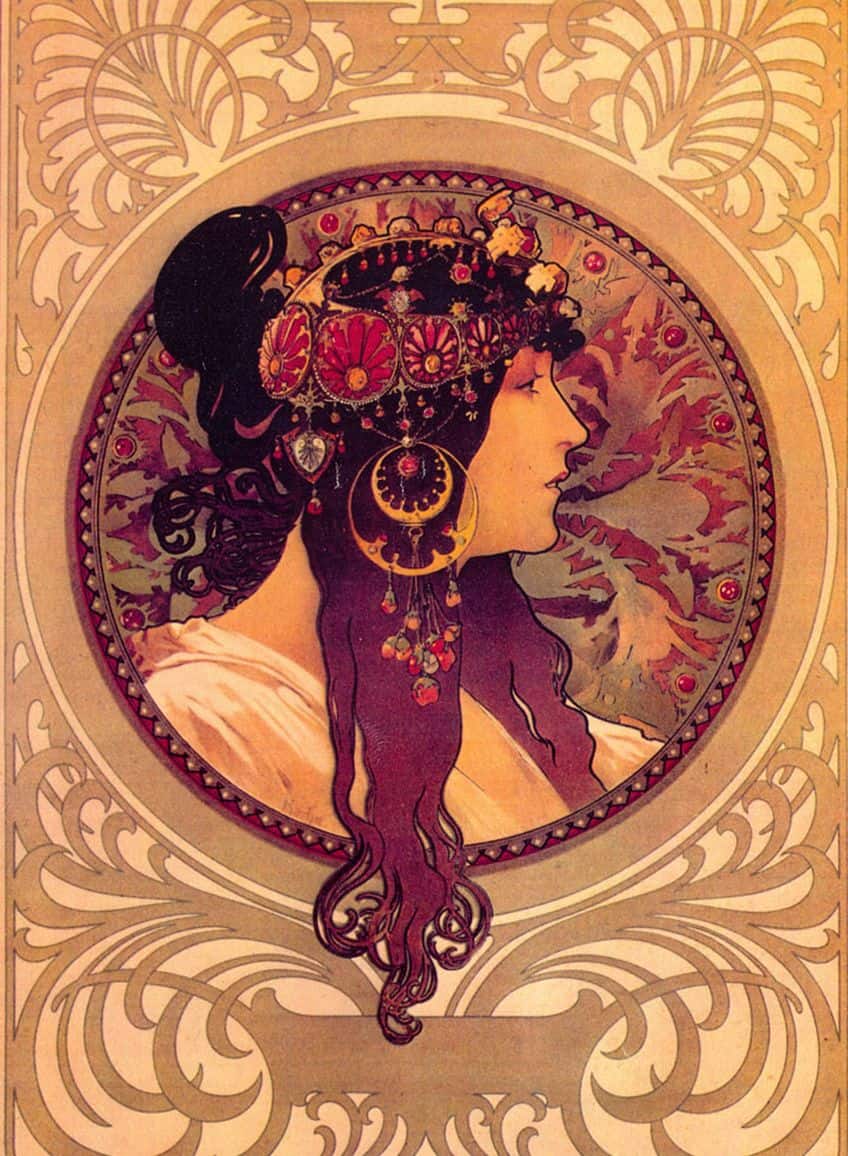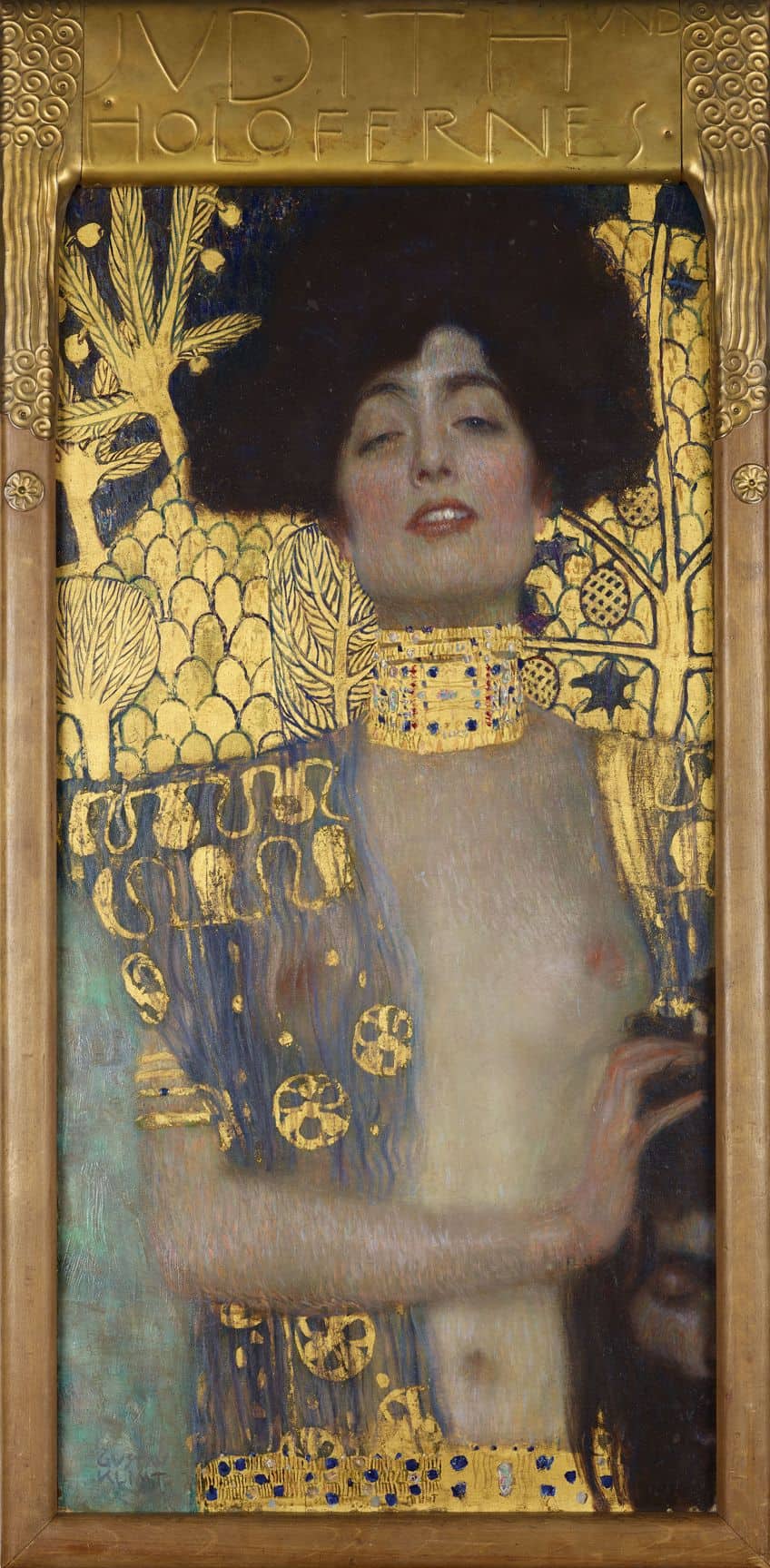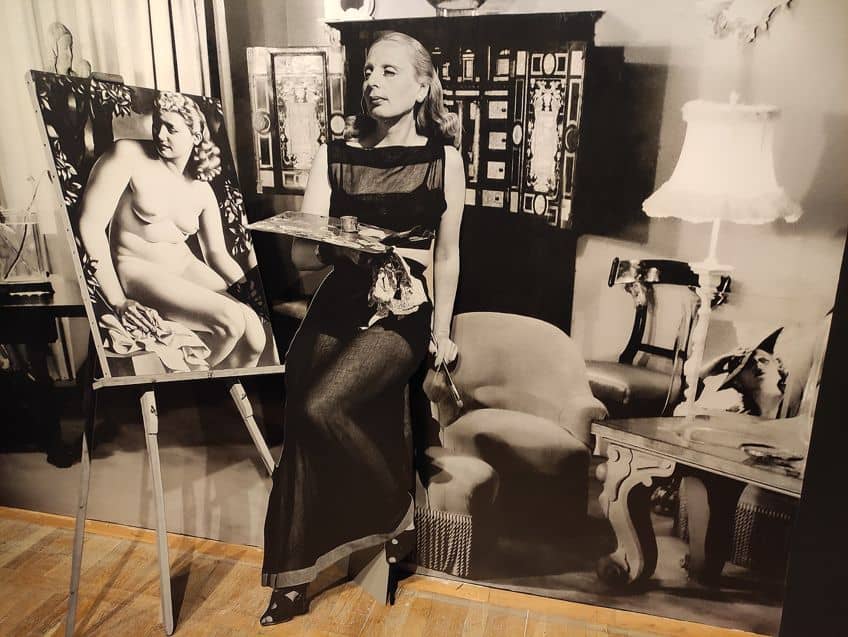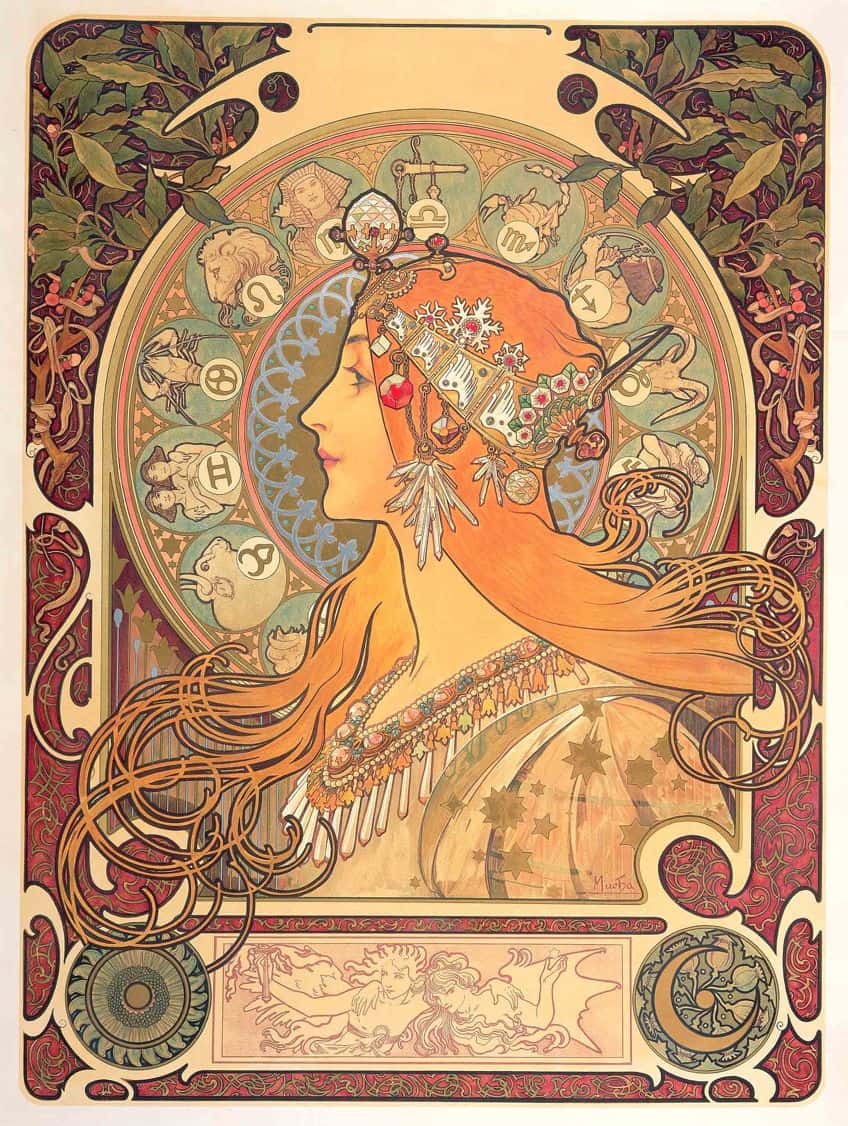Art Deco vs. Art Nouveau – Unpacking the Art Deco Years
Art Deco vs. Art Nouveau art is a popular topic of debate concerning the unique visual characteristics of each movement and their impact on the 20th century. These two art movements are often confused with each other but vary in context and style. While the concept of new art has always been a subject of the 20th century and the Modernist age, the art movements of Art Nouveau and Art Deco have had a significant impact on the century and the fields of visual, applied, and decorative arts. In this article, we will introduce you to each movement and their unique histories and visual characteristics that will help you distinguish between the two and gain a deeper understanding of their impact on culture and design.
Exploring Early 20th-Century Aesthetics: Art Deco vs. Art Nouveau
When exploring the differences and characteristics of the art deco vs. art nouveau discourse, it is important to recognize that both movements were crucial to the development of visual landscapes around technology, war, modernization, and mythology’s place in 20th-century art. Art Nouveau and Art Deco are two historically significant art movements that dominated the late-19th and early 20th centuries, each for brief, but impactful periods. While many may confuse the art styles of each movement with each other or assume that the style is the same, the historical context and visual characteristics of each movement differ.

Art Nouveau can be thought of as a period in the visual and applied arts that focused on nature and free-flowing forms that emerged as a response to the height of industrialization. Art Deco on the other hand had a particular aim centered on the exploration of luxurious materials that reflected the glamor and modernity of the 1920s and 1930s through color and shape. It may be easy to confuse the two movements as a singular art style, given their overlap in the 20th century, however, the two do share a focus on the decorative arts with distinct styles that we will examine below.
What Is Art Nouveau?
The Art Nouveau movement was shaped by a period of fascination with the natural world and spanned from the 1880s to the early 20th century, around 1914. The visual language of the Art Nouveau movement was largely shaped by design, which incorporated natural motifs and other environmental designs into the art space. In essence, Art Nouveau was the first movement that was inspired by the idea of “new art” and took shape in different countries across Europe, gaining new styles adapted to each country and style, including the Modernismo, Reformstil, Secese, Skønvirke, and Jugendstil variations.
Geometric shapes are also featured in Art Nouveau art alongside a preference for sinuous shapes and linework that conveyed freedom, fluidity, and oneness with natural shapes and elements.
Artists of the Art Nouveau movement incorporated various disciplines into their creative practices, including typography, architecture, jewelry, and the decorative arts. The movement reached the peak of its popularity in the early 20th century and spread across Europe to shape the field of Modern design aesthetics. To better understand the visual language of Art Nouveau, we will unpack the visual characteristics of the art movement.
The Visual Characteristics of Art Nouveau Art
The visual characteristics of Art Nouveau art included an emphasis on natural lines and organic shapes with curved features. While geometry did feature in Art Nouveau’s visual aesthetics, sinuous lines were at the forefront of design. The philosophy behind organic designs emerged as a response to the mechanization of society as seen in the late 19th century. Artists wished to free society from the rigid mechanisms of technology associated with industrialization and opt for a celebration of beauty and nature. Inspired by the grace of nature, flowers, and the human body, artists of the Art Nouveau movement elevated their works by adding a sense of movement and vitality to counteract the impersonal nature of industrialization.

The color scheme of the Art Nouveau movement saw the use of a variety of colors to create more harmonious works of art. There were no restrictions to the movement in terms of color, however, the popular colors included pastel shades and bold expressive colors that helped provide a sense of movement to the designs. Warm tones such as ochres and deep greens were used to evoke organic elements while lilac, soft pinks, and pale yellows were used in floral compositions and invited a sense of femininity and grace to interior design and decorative art. The notion of luxury and opulence were also prominent in the Art Nouveau movement and were illustrated through the use of metallic colors such as gold and silver on ornate works with intricate details. Complementary colors such as blue and orange are also featured in Art Nouveau work for a visually impactful composition.
Notable Art Nouveau Artists and Artworks
Among the most notable artists of the Art Nouveau period included figures such as Alphonse Mucha and Gustav Klimt, who were pioneers of their own unique “new” art styles. Through artworks such as Judith and the Head of Holofernes (1901) by Gustav Klimt, Art Nouveau’s characteristics in the visual arts saw the incorporation of stylistic and decorative designs and motifs in paintings with religious themes. This unique fusion of decorative natural motifs such as trees and sinuous lines accompanied by the Byzantine-esque gold background in Klimt’s work was a stunning example of how Art Nouveau was realized among followers of the Secession movement. Elements such as trees, flowers, and animals also appeared in Art Nouveau work as part of Symbolist philosophies in art that expressed themes such as the interconnectedness of life and growth.
Klimt also produced art that he believed was a manifestation of his connection with the divine and was a spiritual practice aimed at promoting harmony through transcendence.
Artists such as Czech painter Alphonse Mucha combined his career and experience in the graphic arts to create highly stylized and unique posters that were incredibly popular during the Art Nouveau movement. His signature illustrative style is seen as one of the definitive styles of the Art Nouveau movement and was called the “Le Style Mucha”. This style went on to influence many illustrators of the early 20th century and featured iconic visuals such as women with floral halos, pastel-colored robes, and ethereal flowing hair. Mucha’s work is highly valued and sells for up to $1.4 million at auction. Among Mucha’s most intriguing paintings and illustrations include Daydream (1897), Chocolat Ideal (1897), and The Slav Epic (1928).

Other artists such as Aubrey Beardsley also contributed to the visual language of the Art Nouveau movement through his black and white illustrations. Aubrey Beardsley was a famous English Art Nouveau graphic artist whose designs explored the decadence of line work with strong graphic features included in his erotic and provocative artworks. Beardsley’s contribution to the movement and its visual landscape was noted in his delicate use of detail, which can be seen in his illustrations for Salome by Oscar Wilde. His unconventional approach to a stylized illustration of the human form through elongated figures and decorative elements influenced many illustrators of the 20th century who admired his linework and evoked a sense of fluidity and sensuality. Art Nouveau architecture can be admired in the design of the Horta Museum in Belgium.
The Art Deco Movement
The Art Deco years spanned from 1920 up to 1940 and was a movement that can be understood for its sophisticated and refined approach to including geometric shapes in its visual oeuvre as a reflection of modernity and luxury. The visuals of the movement originated in France in the early 20th century and quickly gained popularity across the world in the 1920s. The Art Deco years begin after the First World War and is considered a post-war style that was influenced by notions and aesthetics of modern technological advancements, including the harsh and bold visual styles from pre-Columbian and Egyptian art.
Art Deco was defined by the ideas of glamor, vibrancy, sleekness, and bold geometry that featured in design across architecture, fashion, interior design, and the fine arts.
From paintings to jewelry, Art Deco infiltrated modern society in almost all aspects and was a way of fast-tracking the acceptance of industrialization in a post-war society. One can quickly identify the visual difference between Art Nouveau and Art Deco in its lack of organic focus or natural motifs. For Art Deco artists, modernity was best captured in visuals that resembled the future of society, and this was achieved by mimicking the textural quality of materials such as aluminum, concrete, and enamel-coated metal for an added sense of luxury.
The Visual Characteristics of Art Deco Art
The visual characteristics of Art Deco styles included an emphasis on geometric lines and shapes as well as a color palette that reflected more contrasting colors. Popular Art Deco colors included vibrant colors that improved the visual impact of an artwork or object. These colors included specific shades such as ruby red, emerald green, sapphire blue, and amethyst purple with metallic additions for an opulent effect. As long as the color reflected the glamor of the day, the work could be considered Art Deco. Another common characteristic of Art Deco art was the use of sleek lines, geometric patterns, and an overall sense of energy and movement that reflected the fast-paced nature of modernity and growth in the 20th century.

Technological advancements of the century also influenced the Art Deco style and visual characteristics since new technologies allowed artists to access new techniques and materials, which led to new visual developments. The machine age coincided with the Art Deco era and saw artists draw inspiration from architecture and advancements in airplanes, skyscrapers, and automobiles. Mass production of goods through revolutionized technologies also aided the creation of decorative objects and furniture on a larger scale, which broadened access to Art Deco styles. Materials such as glass, chrome, and polished metals were incorporated into artworks for their visual appeal and association with the age of technological development and innovation.
Notable Art Deco Artists and Artworks
Young Lady with Gloves (1930) is a classic example of an Art Deco painting that was created by Tamara de Lempicka, also known as Maria Gorska, who was a pioneering Polish painter of the movement. Lempicka’s exposure to post-Russian Revolution society and professional relationships with the exiled elite of Eastern Europe enabled her to capture the portraits of many interesting individuals while working in an Art Deco fashion. Her style in painting can be described as sleek, classy, and elegant while displaying the bold fashions and faces of 20th-century women. Her self-portrait, Self Portrait (Tamara in a Green Bugatti) (1928), is another example where the Art Deco artist evokes an image of the modern woman in the driver’s seat of a green Bugatti.
The painting was created in celebration of the independence of women as the cover of the fashion magazine Die Dame.
English artist Theyre Lee-Elliott was another iconic figure of the Art Deco movement who is credited with creating numerous Art Deco-inspired logos, including the Speedbird and many posters for British Airways. Lee-Elliott was also a painter and illustrator whose designs reflected the idea of rapid advancement in technology through dynamic lines and high-contrast colors. Some of his best works can be seen in London to Paris, Imperial Airways (1932), and British Airways/Wings over Europe (c. 1938), which are both full-color posters that promoted travel, speed, and a sense of advanced aircraft technology. Art Deco architecture can still be admired in the design of the Chrysler Building located in New York City.
Understanding the Differences Between Art Nouveau and Art Deco
To summarize, one can distinguish between the Art Nouveau and the Art Deco movements by grasping their visual characteristics and philosophies that each shaped the artwork of the early 20th century. It is vital to understand that Art Nouveau predated Art Deco and was a movement that focused on nature and the appreciation of natural motifs in art. The Art Nouveau period can be understood in its preference for ornate design, Japanese-inspired colors, and motifs, as well as mythological creatures that promote harmony with the natural world. Art Nouveau was thus an idealized movement that sought to escape from the pressures of industrialization.
Art Deco on the other hand was a movement that embraced the technological advancement of industrialization after World War I and emerged shortly after Art Nouveau. While the two styles may have existed at the same time in the early 20th century, the Art Deco movement had a more striking and modern visual language that was informed by mass production, industrial materials, and dynamism as the ideal reflection of modernity. Art Deco focused on stronger graphic lines and geometric shapes that mimicked the development of urban spaces.

Common themes in Art Nouveau art included the admiration of nature, an emphasis on curvilinear lines, an exploration of sensuality, femininity, and a fascination with the mythical. Themes related to exoticism and the aquatic world also featured in Art Nouveau works rendered in pastel and soft organic colors while motifs such as poppy flowers, dragonflies, and whip-shaped lines and leaves were the top design feature for most illustrations. Popular themes found in Art Deco art included the use of bold color, geometric lines, and contrast with streamlined forms that favored sleek and luxurious aesthetics. Art Deco themes were also centered on technology, modernity, and a sense of exuberance concerning the visual languages of a few ancient civilizations. Popular motifs such as the stylized fountains and fern imagery were the height of decorative design in the Art Deco era.
The visual languages of the Art Nouveau and Art Deco movements had a profound impact on design and culture. Each movement not only challenged existing conventions around art and design, but also saw shifts in society’s adoption of alternative visual codes adopted in architecture, design, fashion, and later popular culture that continue to inspire many today. Through these movements’ incorporation of the decorative arts, the 1920s and 1930s became a pool of rich visual and creative exchange for many seeking a sense of refinement from the industrial age.
The Art Nouveau and Art Deco movements have allowed for art to infiltrate society through everyday objects, fashion, and décor that became lifestyle preferences for many, while also reflecting their respective visual landscapes and views on industrialization and modernity. There is much to learn about these two art movements that shaped the “roaring twenties”, as they provided us with some of the most visually pleasing designs and artworks of the 20th century.
Frequently Asked Questions
What Are the Characteristics of Art Nouveau Art?
The most common visual characteristics of Art Nouveau art include natural motifs that feature flowers, insects, orchids, spiders, dragonflies, organic shapes, and elongated whiplash lines that convey movement and fluidity.
What Are the Characteristics of Art Deco Art?
The common characteristics of Art Deco art include modern and sleek geometric lines inspired by art styles from ancient civilizations and 20th-century Cubism. Other Art Deco motifs include zigzags, sharp lines, zebra skin, and rough fern leaves. Art Deco styles were inspired by art from China, Africa, and Mesoamerican societies, and included materials that reflected opulence and technological advancement.
What Is the Difference Between Art Nouveau and Art Deco?
The differences between the Art Nouveau and Art Deco movements are distinct in their context and visual language. The Art Deco movement was a socio-cultural response to World War One that saw society embrace the visual landscape of industrialization. The Art Nouveau movement was a reaction against the rigid and fast-paced development of industrialization, which focused on the appreciation of nature and organic forms. The Art Nouveau movement differed from the Art Deco movement in that it was nature-based and focused on elaborate floral designs, while Art Deco demonstrated a preference for sleek and modern geometric designs.
Liam Davis is an experienced art historian with demonstrated experience in the industry. After graduating from the Academy of Art History with a bachelor’s degree, Liam worked for many years as a copywriter for various art magazines and online art galleries. He also worked as an art curator for an art gallery in Illinois before working now as editor-in-chief for artfilemagazine.com. Liam’s passion is, aside from sculptures from the Roman and Greek periods, cave paintings, and neolithic art.
Learn more about Liam Davis and about us.
Cite this Article
Liam, Davis, “Art Deco vs. Art Nouveau – Unpacking the Art Deco Years.” artfilemagazine – Your Online Art Source. July 21, 2023. URL: https://artfilemagazine.com/art-deco-vs-art-nouveau/
Davis, L. (2023, 21 July). Art Deco vs. Art Nouveau – Unpacking the Art Deco Years. artfilemagazine – Your Online Art Source. https://artfilemagazine.com/art-deco-vs-art-nouveau/
Davis, Liam. “Art Deco vs. Art Nouveau – Unpacking the Art Deco Years.” artfilemagazine – Your Online Art Source, July 21, 2023. https://artfilemagazine.com/art-deco-vs-art-nouveau/.



